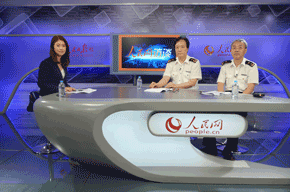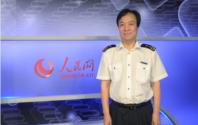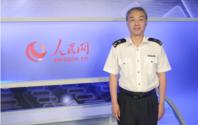 Online Interview
Online Interview
Topic: Beijing-Tianjin-Hebei Customs Clearance Integration Measures
Time:09:00 AM (Fri) June 27, 2014
Special Guests:XIE Jinyong, Deputy Director General and Party Leadership Group Member of Beijing Customs District, and ZHAO Weizhen, Director of Customs Supervision and Clearance Department of Beijing Customs District
Beijing-Tianjin-Hebei Customs Clearance Integration Measures
[Xie Jinyong]: I think the highlight of the integration is that it has broken the administrative boundaries among the three Customs Districts, thus enterprises can handle their business with any customs houses therein as with just one customs house. In this way, customs formalities will be minimized, the convenience in clearance will be maximized, and the logistical cost be minimized. [09:13]
[Host]: Well, Director Zhao, as far as we know, the traditional clearance mode is declaration at hometown and release at port. After the realization of the regional clearance integration, will we still need the traditional mode? Besides, as the traditional clearance mode requires an enterprise to have high rating, after the reform, will such a requirement remain? [09:13]
[Zhao Weizhen]: In designing this Scheme, we had a basic principle, namely, to respect the choices of enterprises. Therefore, the integration is aimed to providing a new way of customs clearance. The traditional clearance mode will remain after the reform and enterprises can choose any convenient mode that suits them. [09:13]
[Host]: What benefits will the clearance integration bring to enterprises? [09:15]
[Zhao Weizhen]: It can be summed up to the following aspects: First, one is the unification of risk control standards among the three Customs Districts. Enterprises can enjoy the same treatment at any of the customs houses there. And the other is the unification of law enforcement standards. On the other hand, enterprises can handle the customs formalities like in one customs. Secondly, the three Customs Districts will unify the approval and release standards and cancel manual signature. The Customs can release goods based on electronic information. Enterprises don't have to travel back and forth among the Customs Districts. Thirdly, we use the management mode of Shanghai Pilot Free Trade Zone. For the transport between bonded supervision places and between special customs-controlled areas, we have cancelled the cross-customs-transfer management, allowing enterprises to transport on their own. In addition, according to the requirements by the 18th CPC National Congress on streamlining administration and delegating power to the lower levels, the Customs’ pre-classification of goods, pre-appraisal of price, and pre-determination of origin, as well as administrative licensing, are mutually recognized among the three regions. Licenses issued by the licensing authorities, the licenses issued by the Ministry of Commerce, the inspection-quarantine certificates issued by the AQSIQ are also mutually recognized among the regions. [09:15]
[Host]: Director Xie, as introduced by Director Zhao just now, the enterprises in Beijing-Tianjin-Hebei regions can enjoy many benefits. Can the enterprises registered in other regions enjoy such benefits too? [09:15]
[Xie Jinyong]: The reform of the integration also covers the enterprises registered outside the three regions. More enterprises can enjoy the benefits, thus producing wider social benefits. [09:16]
[Host]: Director Zhao, after the reform of integration, will the traditional mode of customs clearance continue to apply? [09:16]
[Zhao Weizhen]: Yes. We respect enterprises’ choices. [09:16]
[Host]: How can enterprises participate in the integration? [09:16]







